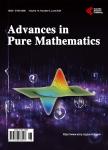A Solution to the Famous “Twin’s Problem”
A Solution to the Famous “Twin’s Problem”作者机构:The 1st Gymnasium in Yiannitsa City Yiannitsa Greece
出 版 物:《Advances in Pure Mathematics》 (理论数学进展(英文))
年 卷 期:2019年第9卷第9期
页 面:794-826页
学科分类:07[理学] 0701[理学-数学] 070101[理学-基础数学]
主 题:Twin Problem Twin’s Problem Unsolved Mathematical Problems Prime Number Problems Millennium Problems Riemann Hypothesis Rie-mann’s Hypothesis Number Theory Information Theory Probabilities Statistics
摘 要:In the following pages I will try to give a solution to this very known unsolved problem of theory of numbers. The solution is given here with an important analysis of the proof of formula (4.18), with the introduction of special intervals between square of prime numbers that I call silver intervals . And I make introduction of another also new mathematic phenomenon of logical proposition “In mathematics nothing happens without reason for which I use the ancient Greek term “catholic information. From the theorem of prime numbers we know that the expected multitude of prime numbers in an interval is given by formula ?considering that interval as a continuous distribution of real numbers that represents an elementary natural numbers interval. From that we find that in the elementary interval around of a natural number ν we easily get by dx=1 the probability that has the ν to be a prime number. From the last formula one can see that the second part of formula (4.18) is absolutely in agreement with the above theorem of prime numbers. But the benefit of the (4.18) is that this formula enables correct calculations in set N on finding the multitude of twin prime numbers, in contrary of the above logarithmic relation which is an approximation and must tend to be correct as ν tends to infinity. Using the relationship (4.18) we calculate here the multitude of twins in N, concluding that this multitude tends to infinite. But for the validity of the computation, the distribution of the primes in a random silver interval is examined, proving on the basis of catholic information that the density of primes in the same random silver interval is statistically constant. Below, in introduction, we will define this concept of “catholic information stems of “information theory [1] and it is defined to use only general forms in set N, because these represent the set N and not finite parts of it. This concept must be correlated to Riemann Hypothesis.



